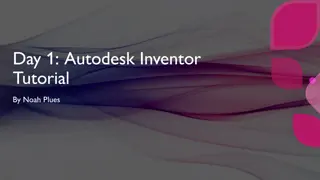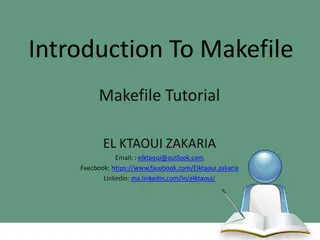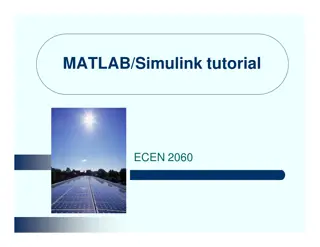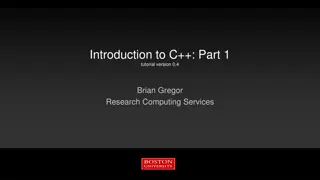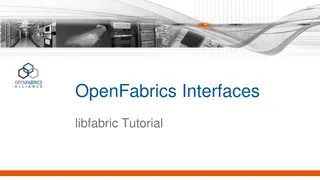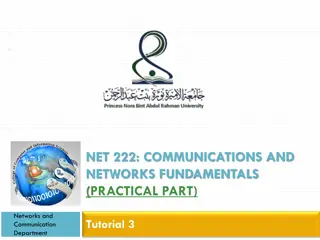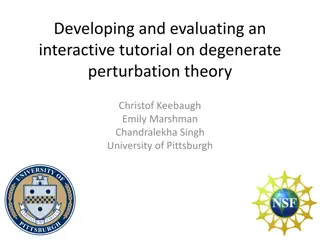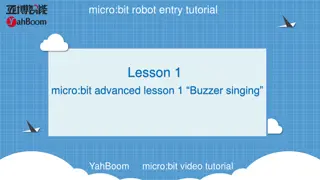
Introduction to CEPCSW and Key4HEP Software Framework
Learn about the challenges faced in high-energy physics (HEP) software development, the need for software standardization, and the implementation of CEPCSW based on the Key4HEP common software stack. Discover how this framework addresses the requirements of data processing, robustness, performance, and ease of use for physicists and developers in the field.
Download Presentation

Please find below an Image/Link to download the presentation.
The content on the website is provided AS IS for your information and personal use only. It may not be sold, licensed, or shared on other websites without obtaining consent from the author. If you encounter any issues during the download, it is possible that the publisher has removed the file from their server.
You are allowed to download the files provided on this website for personal or commercial use, subject to the condition that they are used lawfully. All files are the property of their respective owners.
The content on the website is provided AS IS for your information and personal use only. It may not be sold, licensed, or shared on other websites without obtaining consent from the author.
E N D
Presentation Transcript
Introduction to CEPCSW Introduction to CEPCSW Zou Jiaheng 2024.09.12
Outline General introduction CEPCSW and Key4HEP Examples Introduction to CEPCSW 2
The challenge of HEP software What we need Various requirements for data processing: simulation, reconstruction, etc Robustness and performance: huge volume of data Long term and continuous developing and maintenance Easy to use: most of our users are not computer experts What we have Physicists, but not programmers Solution Effective organization Software standardization Introduction to CEPCSW 3
Software Standardization A unified data processing software system A unified software developing and running environment The software fundamental architecture are well designed Common reusable functionalities Unified software interfaces Coding conventions Documents Improve the software quality Improve the communication efficiency between all developers and users Introduction to CEPCSW 4
Software based on a Framework Framework is applied by many experiments in HEP field Gaudi: LHCb, BESIII, DYB, ... Marlin: iLC, CEPC CDR studies, ... SNiPER: JUNO, LHAASO, ... In a framework The 3 layer architecture Divide and Conquer Software Modularization Application modules Modules are decoupled from each other Software framework Modules are assembled and configured at run time Fundamental tools and libraries Introduction to CEPCSW 5
Outline General introduction CEPCSW and Key4HEP Examples Introduction to CEPCSW 6
Key4HEP [Ref]: Andr Sailer, etc. , CHEP2019 https://indico.cern.ch/event/773049/contributions/3474763/attachments/1938664/3213633/191105_sailer_key4hep.pdf An agreement at a workshop in June, 2019 CEPC CLIC FCC ILC SCTF Software components sharing between different experiments Introduction to CEPCSW 7
CEPCSW Based on KEY4hep (Common Software Stack for HEP) Reuse existing components EDM4hep, DD4hep, Gaudi, ROOT Implement the specific components for CEPC Provide a ready-to-work environment to algorithm developers and physicists Porting tracking algorithms from iLCSoft to CEPCSW Integrate more algorithms and features Move from iLCSoft to the new software system finally Introduction to CEPCSW 8
Gaudi: the Underlying Framework Various algorithms and unified data PODIO PODIO Transient data in memory and persistent data on disk DD4HEP DD4HEP Event loop Use PODIO and DD4HEP in Key4HEP Introduction to CEPCSW 9
Key Components in Gaudi Algorithm The concrete calculation to the event during event loop Most frequently used by users Service Framework: stage Common functionalities that can be invoked by other components Services: lighting, music, scenery, etc. Usually be developed by experienced developers Algorithms: actors Introduction to CEPCSW 10
EDM4hep and PODIO [Ref]: F. Gaede, etc. , CHEP2019 https://indico.cern.ch/event/773049/contributions/3473254/attachments/1939721/3215730/gaede_podio_chep19.pdf PODIO is originally developed in context of the FCC study Introduction to CEPCSW 11
EDM4hep and PODIO EDM4hep is a sub-project of Key4HEP. EDM4hep V0.1 is released in April, 2020 A generic event data model for future HEP collider experiments The code is generated by PODIO from a yaml file An event is described by a set of data collections The default storage backend is ROOT Introduction to CEPCSW 12
Outline General introduction CEPCSW and Key4HEP Examples Introduction to CEPCSW 13
Examples in CEPCSW CEPCSW/Examples/src: C++ source code HelloWorld: a simple algorithm with a property (runtime configuration) SecondAlg: invoke a service in an algorithm DumpIDAlg: fill tuples/histograms and save to ROOT Edm4hepTest: generate/access EDM4hep data objects in an algorithm CEPCSW/Examples/options: Python scripts Configure and start to execute our applications Modules after compiling: dynamic-link libraries Introduction to CEPCSW 14
Example #1: HelloWorld Be inherited from the Algorithm base class 3 interfaces to implement initialize() execute() finalize() Configuration with Gaudi::Property Introduction to CEPCSW 15
HelloWorld Implementation and Execution Be invoked one time at the beginning initialize begin N more events Y Be invoked one time for each event (event loop) execute end Be invoked one time at the end finalize Introduction to CEPCSW 16
HelloWorld Configuration and Running A Gaudi::Property in C++ A Gaudi::Property in C++ helloalg.py A string name in C++ An attribute in Python Introduction to CEPCSW 17
Example #2: SecondAlg Get the service instance Invoke the service Introduction to CEPCSW 18
Example #3: DumpIDAlg NTuple NTuple declaration in the header file declaration in the header file Book the Book the NTuple NTuple in initialize() in initialize() Assign values to Assign values to NTuple it in execute() it in execute() NTuple items and save items and save NTuple NTuple analysis in ROOT analysis in ROOT Introduction to CEPCSW 19
Example #4: Edm4hepTest EDM4hep data objects (or collections) are managed by DataHandle A template class to handle any EDM4hep data collections in memory A string name: it s also the branch name in ROOT files Reader/Writer flag Two algorithms Edm4hepWriteAlg: generate new EDM4hep data objects and register them to the framework Edm4hepReadAlg: read EDM4hep data objects in memory Algorithms are decoupled from memory management and data I/O Introduction to CEPCSW 20
Edm4hepWriteAlg DataHandle declarations in header file Create a SimCalorimeterHitCollection Create a SimCalorimeterHit object Data collection is managed by Gaudi. Data object is managed by collection. Introduction to CEPCSW 21
Edm4hepReadAlg DataHandle declarations in header file Configure the collection names via Gaudi property In the constructor of Edm4hepReadAlg Introduction to CEPCSW 22
Data Input Configuration In In Examples/options/edm4hep_read.py Examples/options/edm4hep_read.py Set input file(s) Only read the data collections that we need This is important to improve the software execution efficiency Configure the data collection names according to the concrete input file(s) Introduction to CEPCSW 23
To Developers and also Physicists Divide and Conquer Software Modularization Most modules are decoupled & most developers can work independently Cooperation Modules are assembled by framework to form a powerful data processing system Software Reuse Fundamental tools and libraries Gaudi framework: shared in HEP field Key4HEP: unified Event Data Model (EDM4hep) and generic algorithms for future collider experiments Introduction to CEPCSW 24
Thanks! Introduction to CEPCSW 25


